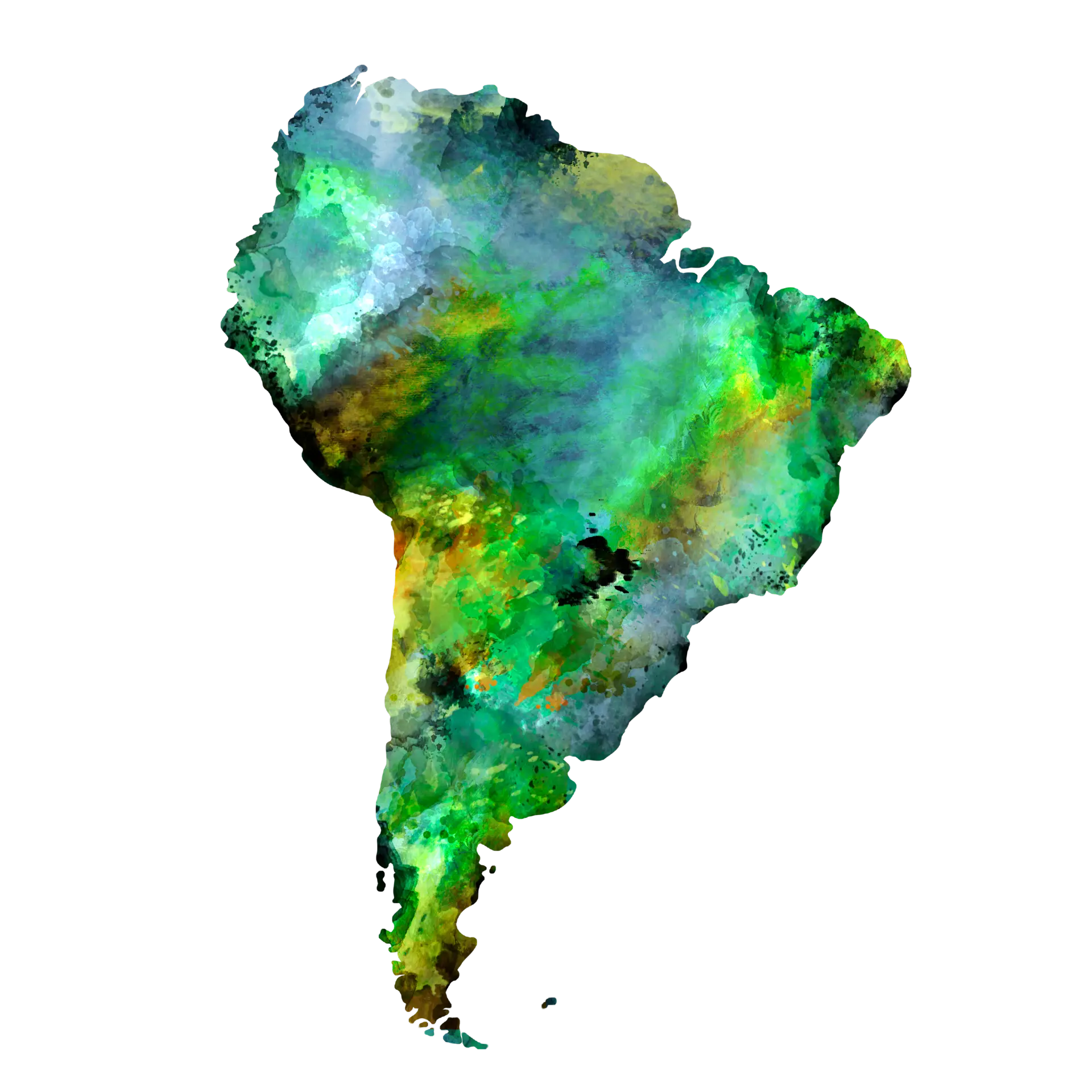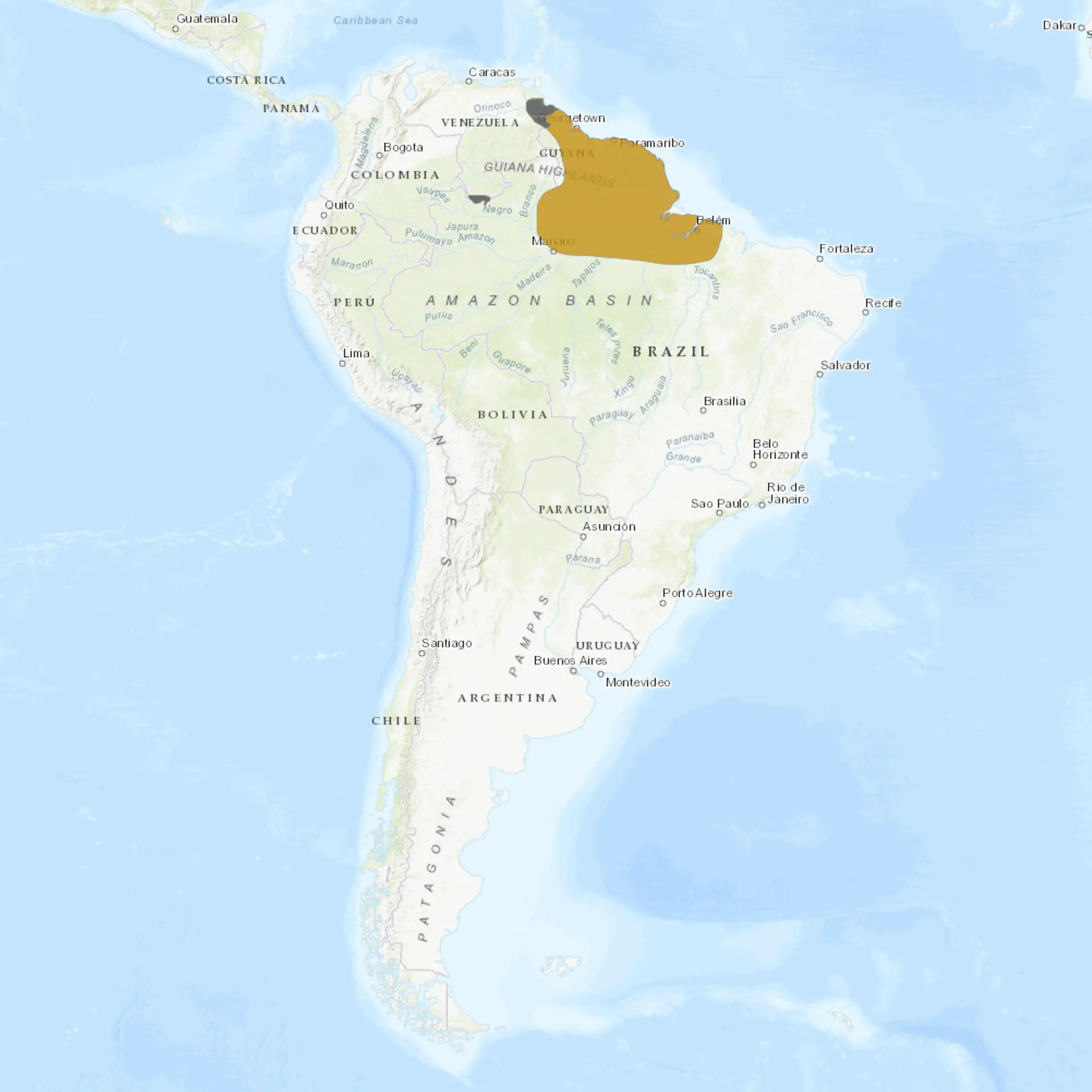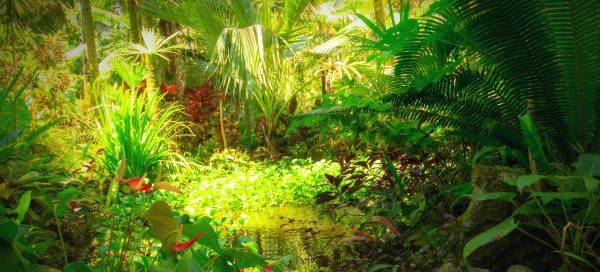Overview
The Amazon Milk Frog, known scientifically as Trachycephalus resinifictrix, is a large species of arboreal frog native to the Amazon Rainforest in South America. Named for the milky fluid it secretes when threatened, this frog has a distinctive appearance, with a creamy to light grey base color embellished with brown or black banding and spots. Adult Amazon Milk Frogs can grow up to 2.5 to 4 inches, with females generally larger than males. Their skin has a slightly granular texture, and they possess large, adhesive toe pads that aid in climbing.
Inhabiting the rainforests of Brazil, Colombia, Venezuela, Ecuador, and Peru, the Amazon Milk Frog is often found in humid, arboreal environments. It is particularly associated with water-filled tree holes, where it spends much of its time. The presence of water is crucial for their survival, as it aids in skin moisture retention and is necessary for their reproductive cycle. These frogs are primarily nocturnal, most active in the evening and night.
The Amazon Milk Frog’s diet mainly consists of insects and other small invertebrates. They are ambush predators, using their excellent camouflage to wait for unsuspecting prey. Their large mouth and quick reflexes allow them to catch prey, including spiders, moths, and flies. These frogs play a vital role in controlling insect populations in their ecosystem.
Taxonomy
Kingdom
Phylum
Class
Order
Family
Genus
Species
Type
Current distribution:
The Amazon milk frog is distributed throughout the Amazon Basin, with confirmed populations in Brazil, Colombia, Peru, and Ecuador. Its range is closely tied to the availability of intact rainforest habitats, particularly those near water sources. Though it is not a migratory species, its arboreal lifestyle allows it to inhabit various forested areas within its range. It is also occasionally found in secondary forests and other disturbed habitats, demonstrating some adaptability.
Despite its stable population, habitat loss due to deforestation poses a significant long-term threat. Logging, agriculture, and urban development can fragment the species' habitat, reducing the availability of suitable breeding and feeding sites. However, the species is widespread and considered common within its natural range. Continued monitoring of its populations and habitats is essential for its conservation.
Physical Description:
Its striking coloration and robust build characterize the Amazon Milk Frog. The base color ranges from creamy white to light grey, with distinct brown or black banding and spotting patterns. This coloration provides excellent camouflage among their rainforest habitat’s foliage and tree bark. Their coloration can change as they age, often becoming darker and less vivid.
Their body is stout with well-developed limbs, each ending in large, round toe pads. These toe pads secrete a sticky substance, allowing the frog to easily adhere to and climb on various surfaces. The eyes of the Amazon Milk Frog are large and prominent, with a horizontal pupil, and are usually a striking gold or copper color. Males can be distinguished from females by their smaller size and slender build.

Lifespan: Wild: ~5 Years || Captivity: ~10 Years

Weight: Male & Female: 14-18 oz (4-5 g)

Length: Male & Female: 2.5-4 in (6.5-10 cm)

Height: Male & Female: 1.65-2.56 in (4.2-6.5 cm)
Characteristic:
Native Habitat:
The Amazon Milk Frog is native to the Amazon Rainforest, inhabiting regions in Brazil, Colombia, Venezuela, Ecuador, and Peru. It thrives in moist, tropical environments, particularly in areas with abundant trees and water sources. The frogs are often found in tree hollows with accumulated water, which is crucial for their hydration and breeding.
Their natural habitat is characterized by high humidity, frequent rainfall, and dense vegetation. These conditions provide the frogs with ample hiding spots from predators and abundant food sources. Preserving the Amazon rainforest is critical for the survival of this species, as habitat destruction poses a significant threat.
Climate Zones:
Biomes:
WWF Biomes:
Biogeographical Realms:
Continents:
Diet:
Diet & Feeding Habits:
The Amazon Milk Frog is an insectivore that feeds on insects and small invertebrates. Its diet includes moths, flies, spiders, and occasionally smaller frogs. These frogs are sit-and-wait predators, using their cryptic coloration to blend into their environment and ambush prey.
Frogs eat commercially available insects such as crickets, roaches, and mealworms in captivity. To ensure proper nutrition, captive frogs must have a varied diet supplemented with vitamins and minerals. In the wild, their feeding habits contribute to ecological balance by controlling insect populations.
Mating Behavior:
Mating Description:
The Amazon Milk Frog’s breeding season coincides with the rainy season in the Amazon. Males call to attract females, producing a loud, distinctive croak that can be heard emanating from their tree-hole habitats during the night. Mating involves the male clasping the female in a position known as amplexus to stimulate egg-laying.
Females lay eggs in water-filled tree holes or other suitable water bodies. The male fertilizes the eggs as they are laid. Tadpoles hatch from the eggs and develop in these water bodies, undergoing metamorphosis into frogs. Parental care is minimal, with the primary responsibility of the parents being the selection of a safe oviposition site.
Reproduction Season:
Birth Type:
Pregnancy Duration:
Female Name:
Male Name:
Baby Name:
Social Structure Description:
The Amazon Milk Frog is generally solitary outside of the breeding season. It is territorial and will defend its chosen tree hole or territory from others of the same species. Social interactions are primarily limited to the breeding season when males actively call to attract females.
These frogs communicate through vocalizations, primarily during mating season. Outside of this period, they are relatively quiet and keep to themselves. Their solitary nature and nocturnal habits make them less visible in the wild, contributing to their elusive reputation.
Groups:
Conservation Status:
Population Trend:
The Amazon Milk Frog’s wild population is not well documented but is not currently considered at risk. However, habitat destruction and the pet trade could pose future threats. These frogs are stable in the Amazon Rainforest, but continued monitoring is necessary to ensure their conservation.
The Amazon Milk Frog is a popular pet in captivity due to its striking appearance and relative ease of care. Captive breeding programs have been successful, helping to reduce the demand for wild-caught individuals. Conservation efforts for their natural habitat will be essential for their long-term survival.
Population Threats:
The main threat to the Amazon Milk Frog is habitat destruction due to deforestation and land development in the Amazon. This leads to the loss of their natural habitats and breeding sites. Pollution and climate change also pose potential threats, impacting the delicate balance of their rainforest ecosystem.
While the pet trade is less of a threat due to successful captive breeding, it can still impact wild populations if not properly regulated. Illegal collection and habitat destruction for agricultural purposes are ongoing concerns that need to be addressed through conservation efforts and environmental policies.
Conservation Efforts:
Conservation efforts for the Amazon Milk Frog include habitat protection and sustainable forestry practices in the Amazon Rainforest. Environmental education and awareness programs are crucial in highlighting the importance of rainforest conservation. Legal protection of their habitats and enforcement against illegal logging and deforestation are essential.
Captive breeding programs have effectively reduced the pressure on wild populations for the pet trade. Research into the ecology and biology of the Amazon Milk Frog is important for understanding their needs and how to best protect them. International cooperation is key to conserving the Amazon Rainforest and its diverse inhabitants.
Additional Resources:
Fun Facts
- The ‘milk’ in their name refers to the toxic, milky secretion they produce when stressed or threatened.
- Despite their toxicity, Amazon Milk Frogs are not harmful to humans unless the toxin is ingested.
- These frogs have adapted to life in the treetops, rarely needing to descend to the ground.
- Their toe pads secrete a sticky substance, allowing them to easily climb and cling to surfaces.
- In the pet trade, they are valued for their striking appearance and interesting behaviors.
- Their large size compared to other tree frogs makes them one of the more impressive species in their family.
- Amazon Milk Frogs can change color depending on their mood, temperature, and humidity.
- Their loud croak is a distinctive feature, often heard in the rainforests at night.
- They are an indicator species, meaning their presence or absence can reveal a lot about the health of their environment.
- These frogs are known in captivity for their relative hardiness and long lifespan.







